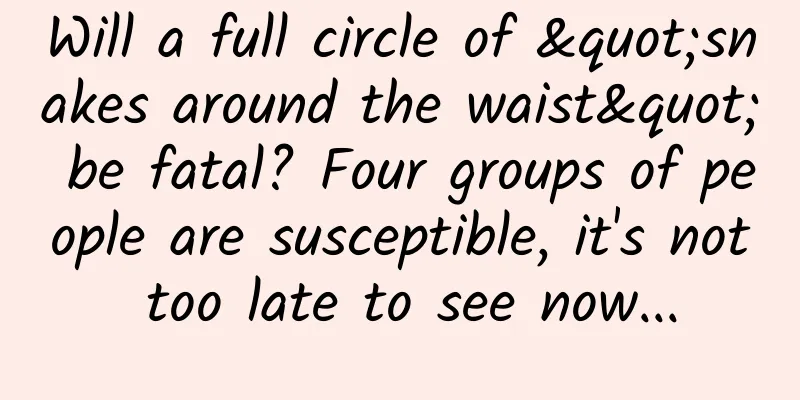Using the "merry-go-round", he opened up a promising discipline

|
Humans have long used the naked eye and optical telescopes to observe visible light (optical) radiation emitted by various celestial bodies, and visible light radiation has long been the only "messenger" for humans to explore the mysteries of celestial bodies. In 1932-1933, a young radio engineer detected radio radiation in outer space and confirmed the precise location of its source, thus opening up a new field of radio astronomy. However, until his death, his work did not receive widespread attention from astronomers, and he missed the Nobel Prize. Shortly after his death, radio astronomy developed rapidly, greatly changing human understanding of various celestial systems and the universe itself. Written by | Wang Shanqin In 1609, Galileo Galilei (1564-1642) pointed his self-made telescope at the sky, becoming one of the first few people to use an astronomical telescope. Using this telescope, Galileo observed celestial bodies such as the moon, Jupiter, and Saturn, and discovered that the Milky Way is composed of countless stars. These discoveries were enough to make Galileo a great astronomer. More than 300 years later, a young radio engineer scanned the sky with a sophisticated antenna array he built and discovered mysterious radio signals. After continuous observation and analysis, he determined that these radio signals came from deep space outside the earth. This discovery opened up a new field of astronomy - radio astronomy, and his antenna array became the first radio telescope. This young man was Karl Guthe Jansky (1905-1950). In scientific terms, Jansky’s important discoveries and the opening up of radio astronomy are even more important than those of Galileo: before Galileo, humans could collect starlight and sunlight with their naked eyes; before Jansky, humans had never confirmed radio radiation from space. He is the well-deserved "Father of Radio Astronomy". Unfortunately, the radio astronomy pioneered by Jansky was ignored by almost all astronomers at the time. He died young due to illness and missed the Nobel Prize. After his death, radio astronomy began to develop rapidly, which strongly promoted human understanding of the universe and the universe itself.
Radio Engineering Home Jansky was born on October 22, 1905 in Norman, Oklahoma, USA. Jansky's father, Cyril Jansky (1870-1959), was born in Richland County, Wisconsin. His grandfather, Jan Jánský, and grandmother, Kateřina Kouklová, were from the Czech Republic. Jansky's mother, Nellie Moreau (1870-1952), married Cyril in 1891; Nellie's parents were from England and France respectively. Cyril and Nellie had six children, of which Jansky was the third. Cyril became a teacher at the age of 16. In 1902, Cyril resigned and went to the University of Michigan to study for a bachelor's degree and a master's degree in physics and electrical engineering. His master's advisor was Professor Karl Guthe (1866-1915); Cyril named his son Jansky "Karl Guthe" in honor of his mentor. In 1905, Cyril became the dean of the College of Engineering at the University of Oklahoma in Norman, and later transferred to the University of Wisconsin as a professor and engineer of electrical engineering, and worked in the latter position until his retirement. [1] Jansky at age 1 in 1906. Photo credit: David Jansky/NRAO Cyril's interest and talent in electronic engineering and physics first influenced his eldest son, Cyril Jansky, Jr. (1895-1975). Cyril Jansky Jr. studied at the University of Wisconsin, and later studied for a master's degree there. After graduating with a master's degree, Cyril Jansky Jr. went to work at the University of Minnesota, where he conducted research and teaching in radio communications and electronics, and soon became a famous radio expert. Cyril Jansky Jr. was one of the pioneers in the field of radio in the United States, and participated in the manufacture of the earliest radio transmitters in the United States. In such a family of radio engineers, Jansky was deeply influenced by his father and brother and received help from them. After completing public high school, Jansky also entered the University of Wisconsin to study physics. Jansky was in poor health and suffered from chronic kidney disease, but he was good at various sports such as ice hockey, tennis, skiing, bowling, softball, golf, etc. He was also interested in chess and bridge. In 1927, the 21-year-old Jansky graduated with honors. One year later, he stayed at the University of Wisconsin to teach and completed all courses for his master's degree in physics. Enter Bell Labs In 1928, at the age of 22, Jansky decided to leave university and apply for a job at Bell Telephone Laboratories (hereinafter referred to as "Bell Laboratories", except for the original references). Because he did not submit a thesis, he did not obtain a master's degree for the time being. Initially, Jansky was rejected by the personnel department of Bell Labs because he had kidney disease and was not suitable for field work. When Cyril learned the news, he immediately stepped in to help his brother. Cyril had worked briefly at Bell Labs during his graduate studies and had already established connections there. In the summer of 1928, Cyril happened to be visiting Bell Labs during his summer vacation. He went to the personnel office of Bell Labs, argued with the personnel department, and assured them that Jansky was physically fit for the job. [1] Cyril's arguments and assurances played a decisive role. In July 1928, Jansky was admitted to Bell Labs as a radio engineer. Cyril later modestly said that his arguments with the personnel department of Bell Labs "may have had some small impact on the lab's decision to hire him"; but he also proudly said: "Of course, Bell Telephone Laboratories and the scientific community have never had any reason to regret this decision." [1] Jansky sitting on the steps of his home in 1928. Photo credit: NRAO/AUI/NSF Jansky's supervisor at Bell Labs was Russell Ohl (1898-1987), the inventor of the solar cell. Because Jansky was ill, Bell Labs sent him to the field site in Cliffwood, Monmouth County, New Jersey, because the environment there was better. Soon after, the laboratory transferred him to the nearby Holmdel site. Jansky's character and abilities were highly regarded. Soon after Jansky first reported to Orr, Orr found that Jansky "did not need any supervision" and said: "He is the kind of person who can stand on his own two feet, and if you try to command a person like that, you destroy his good qualities." Orr also said: "Jansky is very modest. He is a very good person and I like him very much." [2] In 1929, Jansky married Alice Knapp (1906-1982). They had two children, a daughter, Ann, and a son, David. Jansky poses with his wife and children on the steps of their home. Image source: National Radio Astronomy Observatory Archives Mysterious radio noise At that time, Bell Labs was developing a transatlantic wireless telephone business. The core of this business was to transmit information using radio waves with a wavelength of 10-20 meters; after these radio waves were emitted into the sky, they were reflected by the ionosphere in the earth's atmosphere and then received by the receiving station on the other side of the ocean, thus completing the signal transmission. To this end, Bell Labs planned to conduct an in-depth investigation into the properties of the Earth's atmosphere and ionosphere, and to eliminate any radio noise that might interfere with radio signals, thereby improving the quality of wireless telephone communications. Orr's boss, Harald Friis (1893-1976), assigned Jansky to use an antenna at his site to receive radio radiation and determine the source of the radio noise. [2] In March 1929, Jansky began designing and building a new antenna array for receiving radio waves with a wavelength of 14.6 meters (frequency of 20.5 MHz). Jansky was assisted in the design by Fliess. In the fall of 1930, Jansky successfully installed the antenna array and supporting equipment at the field research station. The entire set of equipment cost less than $1,000[3] (equivalent to about $18,000 in 2025). This antenna array is called "Jansky's Carousel". It is about 30.5 meters in diameter and about 6 meters high. It is installed on top of a turntable with four car wheels. The motor drives the wheels to rotate the antenna array so that it can receive radio signals from all directions. [4] The antenna's automatic recording system is located in a small shed near the antenna. The signal strength is converted into the vibration amplitude of the pen and then recorded on paper. Jansky and his rotating directional radio antenna ("Jansky's Carousel"). Image credit: NRAO/AUI Jansky's array was essentially a large interferometer, made up of multiple antennas, so the direction of a signal could be precisely determined from the signals received by multiple antennas. This was crucial to his later breakthrough. In the months after the antenna began working, Jansky monitored radio noise in all directions. After analyzing it, he divided the origins of these noises into three categories: close thunderstorms, distant thunderstorms, and stable but unknown sources. The detection range of Jansky's rotating directional radio antenna. Image source: Reference [4] Jansky spent more than a year studying the nature of the unknown source. He found that these radio waves were very regular: when the antenna swept across the plane of the Milky Way, a maximum appeared every 20 minutes; the direction of each maximum signal shifted from near south to southwest in about 2 hours. Therefore, he concluded that these signals came from outside the earth. One of the signals Jansky received in February 1932. The arrow marks the moment when the signal was at its strongest. Image credit: Mary Jansky Striffler, Marguerite Jansky Froscher Jansky further discovered that these signals were strongest and weakest every day and night. Finally, Jansky speculated that these signals came from radio radiation emitted by the sun. In December 1932, Jansky published a paper in the Proceedings of the Institute of Radio Engineers (Proc. IRE.), claiming that the third type of radio signal came from the sun. Jansky studies data from an antenna array. Image credit: National Radio Astronomy Observatory Archives Signals from the Milky Way As his observations accumulated, Jansky discovered that the antennas seemed to be moving further and further away from the sun when the signals were strongest, which meant they were not coming from the sun. Jansky also determined that the signal's period of change was about 23 hours and 56 minutes, not 24 hours. Since Jansky had no background in astronomy, he was puzzled by this and asked his friend, astrophysicist Albert Skellett (1901-1991). Skerrit told him that the Earth rotates once every 23 hours, 56 minutes and 4 seconds, and any point on the Earth is aligned with a star in the sky. This cycle is called a "sidereal day". However, since the Earth also orbits the Sun, after the Earth rotates once, the point on the Earth that was previously aligned with the Sun will no longer be aligned with the Sun. It will take about another 4 minutes of rotation for that point to be aligned with the Sun again, so a day and night is 24 hours, and this cycle is called a "solar day". Schematic diagram of the sidereal day and the solar day. On day 0, the "vertical line" on the Earth is aligned with the Sun and also with a distant star. After 23 hours, 56 minutes and 4 seconds, the Earth rotates once and the vertical line is aligned with the star again. This period is a sidereal day. However, at this time, the vertical line is no longer aligned with the Sun and must rotate for nearly 4 minutes before it is aligned with the Sun again. The total time is 24 hours, and this period is a solar day. (The spacing between positions is not to scale). Image source: Reference [5] If the signal changes in a strict 24-hour cycle, then the signal comes from the sun; if the signal is 23 hours and 56 minutes, then it comes from a star or celestial system outside the solar system. Jansky suddenly realized that these signals came from celestial bodies other than the sun. After ruling out the sun, Jansky used optical astronomical maps to compare the signal strength with the direction the antenna was pointed when the signal was received. After careful comparison, Jansky found that at 7:10 p.m. on September 16, 1932, when the antenna received the strongest signal, it was pointed at the center of the Milky Way in the direction of Sagittarius. Therefore, he determined that these mysterious signals came from the Milky Way, and that the signal from the center of the Milky Way was the strongest. In this way, Jansky, who was only 27 years old at the time, pioneered radio astronomy, a promising branch of astronomy. "Jansky's Carousel" was the world's first radio telescope and was listed as one of the 20 great inventions of the 1930s. [6] Jansky was thus called the "Father of Radio Astronomy." Why was he hailed as the "Father of Radio Astronomy" even though he discovered radio radiation from the universe? In fact, both radio and radio are pronounced "Radio" in English, but in Chinese, they are inclusive: radio waves generally refer to electromagnetic waves with a wavelength of more than 0.1 mm, while radio waves generally refer to electromagnetic waves with a wavelength between about 1 mm and about 30 meters. [Note 1] After determining that the signal was coming from the center of the Milky Way, Jansky worked in secret with his antenna for another six months and wrote a new research paper. He told Cyril of his findings and sent the completed paper to him. Cyril notified the editor of Electronics magazine. The editor thought it was an amazing discovery and should be made public. Cyril also approached Bell Labs executives and told them that if Bell Labs did not publish the research, he would publish it without any further authorization. Bell Labs guaranteed that the paper would be published and allowed Jansky to demonstrate it on the radio. [2] When Jansky was about to announce the discovery, his boss kindly reminded him to be cautious, lest it be proved wrong in the future, because no one had ever detected radio signals from outside the earth. Even so, Jansky was very confident in his discovery. On April 27, 1933, Jansky read his paper to a small audience at the annual meeting of the Radio Organization in Washington, announcing his discovery of "star noise" coming from the center of the Milky Way. The audience did not understand his explanation, let alone realize the significance of this great discovery. Bell Labs also announced on May 4, 1933 that Jansky had successfully detected radio waves from the Milky Way. The media did not realize the importance of this discovery to astronomy, but many people believed that these radio waves might become a new energy source. As luck would have it, Jansky's discovery attracted widespread media coverage and he was interviewed by a national radio station. In October 1933, Jansky's paper "Electronic disturbances of apparently extraterrestrial origin" was published in Proc. IRE. This paper announced that the source of the third type of signal was the galactic center. [7] Cyril the Younger said of Jansky’s discovery: “It is really a wedding. It brings together the sciences of astronomy, radio and electrical engineering.”[1] After that, Jansky tried to detect radio signals from the sun, but failed. Later people learned that this was because the sun was in an inactive phase of the sunspot activity cycle at that time, and the radio signals were relatively weak. Jansky's radio telescope was not sensitive enough to detect these weak signals. In 1935, Jansky proposed that the radio signals he detected might be caused by disturbances of charged particles in the gas near the center of the Milky Way. A false-color composite of X-ray and infrared radiation from the center of the Milky Way. Image credit: X-ray: NASA/UMass/D.Wang et al., IR: NASA/STScI Jansky used several of his published papers to apply for a master's degree from the University of Wisconsin and received his degree in 1936. Chance and necessity Jansky's discovery seemed accidental, but in fact it was inevitable. Before Jansky, physicists had speculated that instruments on Earth could detect radio waves from space and put them into practice. In 1896, German astrophysicists Johannes Wilsing (1856-1943) and Julius Scheiner (1858-1913) began to conduct observations in this area; British physicist Oliver Lodge (1851-1940) also used centimeter wave antennas to conduct similar observations between 1897 and 1900. Because the performance of the antenna was not good enough, they found nothing. In 1902, people discovered that the ionosphere would emit radio waves, and thus concluded that space radio signals would be reflected back to space by the ionosphere, and therefore could not be detected on the ground. On the other hand, Louis Lowry and Edmond Bruce (1899-1973) of Bell Labs used antennas to detect some signals of unknown origin earlier than Jansky. However, they could not obtain the time variation pattern of these signals, nor determine their precise location, so they could not determine their nature and source, and thus failed to establish radio astronomy. Jansky was different. His antenna array was sensitive enough to accurately locate the signal, and he repeatedly conducted precise observations and quantitative studies, ultimately determining that the signal came from celestial bodies in the Milky Way. This was the direct reason why he became the father of radio astronomy. Jansky stands in front of his rotating directional radio antenna ("Jansky's Carousel"). Image credit: NRAO As Cyril the Younger later recalled, “The problem of the scientist is to recognize the essential facts, even when they are obscured by a mass of extraneous material, and then to exercise creative imagination in their interpretation. This is exactly what Karl Jansky did.”[1] Broken Dreams After 1935, Jansky intended to further study the radio signals of the Milky Way and applied for funds from Bell Labs to build a 30-meter-diameter dish radio telescope. However, Jansky's application was rejected by the laboratory leadership. At that time, the United States was in the Great Depression, and the Bell Labs leadership believed that the source of the noise had been determined, and studying these space radio signals would not be beneficial to telephone communications. Jansky's mission in this regard had been completed. Eventually, Jansky was assigned to study low-noise amplifiers. After his exploration of radio astronomy was interrupted, Jansky returned to research related to radio technology. Later, Jansky began to work on microwave repeater networks. After the transistor was invented by scientists at Bell Labs in 1947, Jansky became one of the first people to use transistors to make low-noise preamplifiers, and was awarded several patents for this. [8] In 1948, Jansky was elected a member of the Institute of Radio Engineers. In the more than ten years after Jansky discovered cosmic radio waves, almost all astronomers did not realize the extreme importance of this discovery to astronomy. During this period, the only person who followed up on Jansky's work and made a breakthrough was Grote Reber (1911-2002), who was also a radio engineer. Reber built a 9-meter dish radio telescope in 1937. This was the second radio telescope in the world, and its performance was better than that of Jansky's radio telescope. Reber used it to observe the radio radiation emitted by the sun in 1944. As radio astronomy gradually gained attention in the astronomical community, Jansky's dream of re-studying radio astronomy might soon come true. However, his physical condition prevented him from having this opportunity. Died young and missed the Nobel Prize In early 1950, Jansky came to Orr's office, and Orr thought Jansky was ill. Jansky said to Orr: "I have to say goodbye to you. I am very ill and must go to the hospital."[8] Orr hugged Jansky and said, "I hope you can come back to see us soon." However, Orr had a premonition that Jansky would not live long. Later, Orr recalled the scene of Jansky's farewell and said, "It was one of the saddest moments in my life."[8] On February 14, 1950, Jansky died of a stroke caused by kidney disease in a hospital in Red Bank, New Jersey at the age of 44 (before his 45th birthday). Until his death, Jansky never received any awards or honors in the field of astronomy, even though his discoveries opened up a new and promising discipline, radio astronomy, and even though his achievements would soon have an immeasurable and far-reaching impact on the development of astronomy and cosmology. According to the information that was later declassified, German physicist Winfried Schumann (1888-1974) nominated Jansky for the Nobel Prize in Physics in 1948. However, at that time, the importance of radio astronomy was still not widely recognized in the astronomical community, and it was even less likely to impress the Nobel Prize judges, so Jansky naturally did not win the prize. However, Schumann's vision is admirable. "If Jansky had not died young, he would have definitely won the Nobel Prize," said William Imbriale, a senior scientist at NASA's Jet Propulsion Laboratory (JPL). "His accidental discovery gave rise to a new branch of astronomy - radio astronomy." It is a pity that he missed the Nobel Prize because of his early death. However, Jansky's great achievements no longer need the Nobel Prize to prove it. Missing Jansky is a loss for the Nobel Prize. Its list is missing a great scientist who has made a name for himself in history. Jansky and his family's grave at a mass grave in Wisconsin. His name is in the middle of the top row. On the upper left is his older brother, Cyril Jr. On the lower left and right are his father's and mother's names, respectively. Image source: Reference [8] The rapid development of radio astronomy In 1950, radio astronomers at Cambridge University used radio interferometer to produce the first edition of the Cambridge Catalogues of Radio Sources. Since then, this catalogue has been continuously updated to the 10th edition, the most famous of which is the third edition (3C) completed in 1959. In 1951, astronomers from the United States and Australia discovered the 21-cm spectral line emitted by neutral hydrogen using radio telescopes almost simultaneously (for the knowledge and applications related to the 21-cm spectral line, see the introduction in the article "Masters in the Eyes of Masters - Astronomy Master Oort"). Since then, the status of radio astronomy and the importance of radio telescopes have attracted widespread attention in the astronomical community, and many radio telescopes have sprung up around the world. Using radio telescopes, astronomers detected stellar radio sources in the 1960s (observations of the optical counterparts of these radio sources directly led to the discovery of quasars), microwave background radiation (thus proving the correctness of the Big Bang theory), pulsars (thus confirming the existence of neutron stars), discovered interstellar organic molecules, and so on. Coincidentally, Arno Penzias (1933-2024) and Robert Wilson (1936-), who detected microwave background radiation, were also engineers at Bell Labs, and the giant horn antenna they used was also located in Holmdel; this antenna also belonged to Bell Labs, and it was only about 1 mile (1.6 kilometers) away from the "Jansky Carousel" at the time [9]. This small town realized the legend of two generations of radio engineers. Penzias, Wilson and the horn antenna they used to discover the cosmic microwave background radiation (1962). The antenna is 15 meters long and weighs 15 tons. It was built in 1959. Image source: NASA After Jansky's death, Cyril the Younger pessimistically told Jansky's family: "His contribution to fundamental science was so great that the full value of his discoveries will not be recognized for at least half a century." However, in 1956, Cyril the Younger said: "Only six years later, I found myself standing before a group of astronomers, physicists and radio engineers who were far more capable than I was, amazed at the progress that had been made in recent years in a new branch of astronomy, and I was proud to declare that this new discovery was made by my brother." [1] Inspired by these major advances, radio astronomy has developed at an astonishing rate. Radio telescopes can be installed on the ground like optical telescopes, instead of being launched into space like ultraviolet telescopes, X-ray telescopes, and gamma-ray telescopes. Their construction and operation costs are much cheaper. The degree to which electromagnetic waves of different bands are absorbed by the atmosphere. 100% means that they are completely absorbed by the atmosphere, and 0% means that they are not absorbed at all. The dish antenna represents a radio telescope. Wavelengths from a few centimeters to 30 meters can completely penetrate the atmosphere and be received by radio telescopes on the ground. Its transparency is better than that of visible light (the rainbow band in the picture). Image source: NASA In 2017, an international collaboration team combined submillimeter radio telescopes in multiple parts of the world to observe the same celestial object at the same time, making it the "Event Horizon Telescope" (EHT); using the EHT, astronomers took pictures of the black hole at the center of the galaxy M87 (M87*) and the black hole at the center of the Milky Way (Sagittarius A*). On April 10, 2019, the EHT team released a photo of the black hole at the center of M87, which was the first photo of a black hole ever taken by humans. On May 12, 2022, the EHT team released a photo of the black hole at the center of the Milky Way. EHT captured radio images of the black hole at the center of M87 and the surrounding matter (left) and radio images of the black hole at the center of the Milky Way and the surrounding matter. Image source: EHT Belated commemoration With the rapid development of radio astronomy, people have become increasingly aware of Jansky's contributions and commemorated him in various ways. A crater on the moon was named "Jansky Crater"; the asteroid 1932 was named "Jansky"; the high-frequency radio noise from the universe was called "Jansky Noise". In order to commemorate Jansky and reward outstanding scholars in radio astronomy and astrophysics, the Trustees of Associated Universities, Inc. established the Karl G. Jansky Lectureship, which has been awarded annually since 1966. The National Radio Astronomy Observatory (NRAO) named a postdoctoral scholarship "Jansky Scholar". In 1973, the International Astronomical Union announced the use of Jansky (abbreviated as Jy) as the unit of celestial radiation flux density, 1 Jansky equals 10−26 W·m−2·Hz−1, indicating that within the unit frequency range, 10−26 watts of power is received per square meter. This unit is particularly important in the field of radio astronomy. On January 10, 2012, NRAO announced that it would rename the Very Large Array (VLA), which had just completed a major upgrade, to the Karl G. Jansky Very Large Array. This is one of the most powerful radio telescope arrays in the world, and it began operating in 1981. It consists of 28 independent radio telescopes with a diameter of 25 meters, 27 of which are operating normally. Each telescope can move along the rails and form arrays of various distances with other telescopes. The famous science fiction movie "Contact" released in 1997 was filmed at the Very Large Array. Image source: IMDB.com Since the original site of the Jansky telescope was built as the Holmdel Complex of Bell Laboratories between 1959 and 1962, a full-scale replica of the Jansky telescope was built at Green Bank Observatory in West Virginia and a plaque was placed next to it in 1966. A full-scale replica of the Jansky radio telescope at Green Bank Observatory (top) and a plaque with a description (bottom). Image credit: Astrochemist (top), Jarek Tuszyński (bottom) Lucent Technologies, the successor to Bell Telephone Laboratories, placed a 15-foot-long (4 m) monument and a plaque near the Holmdel complex. The monument resembles an antenna and is located precisely where Jansky's radio telescope antenna was pointed at 7:10 p.m. on September 16, 1932, when the signal was strongest.[10] The antenna-shaped memorial to Jansky and a sign describing the memorial. Image credit: John R. Barrows In 2023, NRAO announced that it would invest $2 billion to replace the current "Jansky Very Large Array" with 100 new radio telescopes, and combine 160 radio telescopes across the United States to form the "Next Generation Very Large Array". Commenting on Jansky’s groundbreaking work, radio astronomer John Kraus (1910–2004) said: “Until 1930, all we knew about the sky came essentially from what we could see or photograph. Karl Jansky changed all that. Since ancient times, mankind had been deaf to the radio voices that filled the universe; now these radio voices suddenly sang in unison.”[11] Notes [Note 1] Generally speaking, space radio waves smaller than 1 mm will be absorbed by water vapor in the Earth's atmosphere, and space radio waves larger than 30 meters will be reflected back into space by the Earth's ionosphere. To observe millimeter or even submillimeter radio waves, it is best to place the radio telescope on a dry plateau. Special Tips 1. Go to the "Featured Column" at the bottom of the menu of the "Fanpu" WeChat public account to read a series of popular science articles on different topics. 2. Fanpu provides a function to search articles by month. Follow the official account and reply with the four-digit year + month, such as "1903", to get the article index for March 2019, and so on. Copyright statement: Personal forwarding is welcome. Any form of media or organization is not allowed to reprint or excerpt without authorization. For reprint authorization, please contact the backstage of the "Fanpu" WeChat public account. |
<<: How much color will enter the body after tattooing? This explanation is surprising →
Recommend
The most effective user growth methodology!
Isn’t the value of the product what makes users b...
Major live streaming sales events in the first half of 2020
2020 can be said to be the year when live streami...
If you don't know these iOS tricks after getting an iPhone, then you've wasted your money
Some friends buy an iPhone but still don’t know w...
The distance between you and stargazing experts is just this guide
Loading long image... Source: National Geographic...
Body? Consciousness? Which one is the real me?
Let's talk about a mind-blowing hypothesis. I...
Regarding Chengdu tea tasting agents, I have reliable recommendations for you!
Chengdu Pincha Selection Club Studio Reservation ...
Why doesn't Apple attend MWC? Is it arrogance or caution?
[[221274]] As a company with a market value of mo...
Do you believe that you can judge the taste of lotus root by looking at the number of holes?
Lotus root is tender and crispy, and is delicious...
Tofu becomes a popular meat substitute in the United States! What exactly happened? Attached is the latest epidemic situation
During the COVID-19 pandemic, a large number of f...
Design and attribute matching skills of advertising promotion materials!
After we have determined the marketing promotion ...
Experience Meizu Blue Note: A combination of many "firsts"
This year, Meizu launched two new products, MX4 a...
Beware! Blood in stool may not be hemorrhoids, it may also be a sign of cancer! Be sure to do these tests!
As the saying goes, "Nine out of ten people ...
Teach you step by step to build the PHP version of RabbitMQ message queue development environment and Demo practice
[Original article from 51CTO.com] In the face of ...
What content is prohibited from being posted in WeChat circles? What are the usage specifications?
The following content is prohibited in WeChat Cir...
How to plan a successful event promotion?
Event operation , planning different marketing ac...









